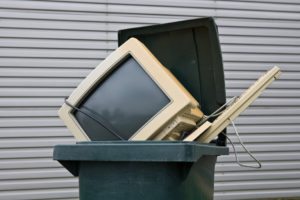 United Nations University (UNU) recently released a report on possible uses for CRT glass, but even the report authors want to see more research conducted.
United Nations University (UNU) recently released a report on possible uses for CRT glass, but even the report authors want to see more research conducted.
The study specifically addressed disposal and recycling options for CRT leaded glass and whether it can replace raw materials. But researchers found most of the options in the report weren’t viable long term.
“More than providing a blunt conclusion on what to do with CRT leaded glass, our study aims at highlighting essential criteria to be considered when assessing the feasibility of currently available and future recycling and/or disposal options for CRT leaded glass,” author Eliette Restrepo wrote in an email to E-Scrap News. “The answer to ‘what to do’ requires rigorous analysis.”
One critic of current recycling techniques, Doug Smith from Sony Electronics, said he thinks the paper is excellent and unbiased, but he would’ve liked to have seen more data on the amount of greenhouse gas emissions from transporting CRT leaded glass long distances. He mentioned the carbon impacts of transporting it from North America to Spain, where it is used in ceramic tiles.
He would’ve also liked to have seen more information on possible health risks to workers in secondary processing facilities.
“Will workers be aware that ceramic tile and concrete products contain lead and be able to protect themselves and their families from toxic lead dust?” he wrote.
Restrepo agrees that more research on health effects needs to be done. UNU — along with producers, CRT recycling companies, academics and nonprofit organizations — is working on another white paper on the overall CRT issue.
Many recycling options discussed in the report need a steady supply of glass to be economically viable. But something needs to be done with CRT leaded glass, whether it’s profitable or not, especially in certain parts of the world.
“Developing countries are the ones with the most urgent need for feasible recycling and disposal options for CRTs.” Restrepo went on to say joint efforts conducted regionally could boost the feasibility of recycling options that require the properties of lead.
Smith said no other products use the unique, chemically engineered blend of sand and oxides that make up CRT glass. He thinks it should be landfilled or, at the very least, stored until a proper recycling or disposal method is discovered.
“From a risk-management perspective, hazardous-waste stabilization and landfill gets rid of the lead from ever exposing another person forever,” he said. “To not lose the lead value for the future, it may be beneficial to place in safe permitted storage.”



